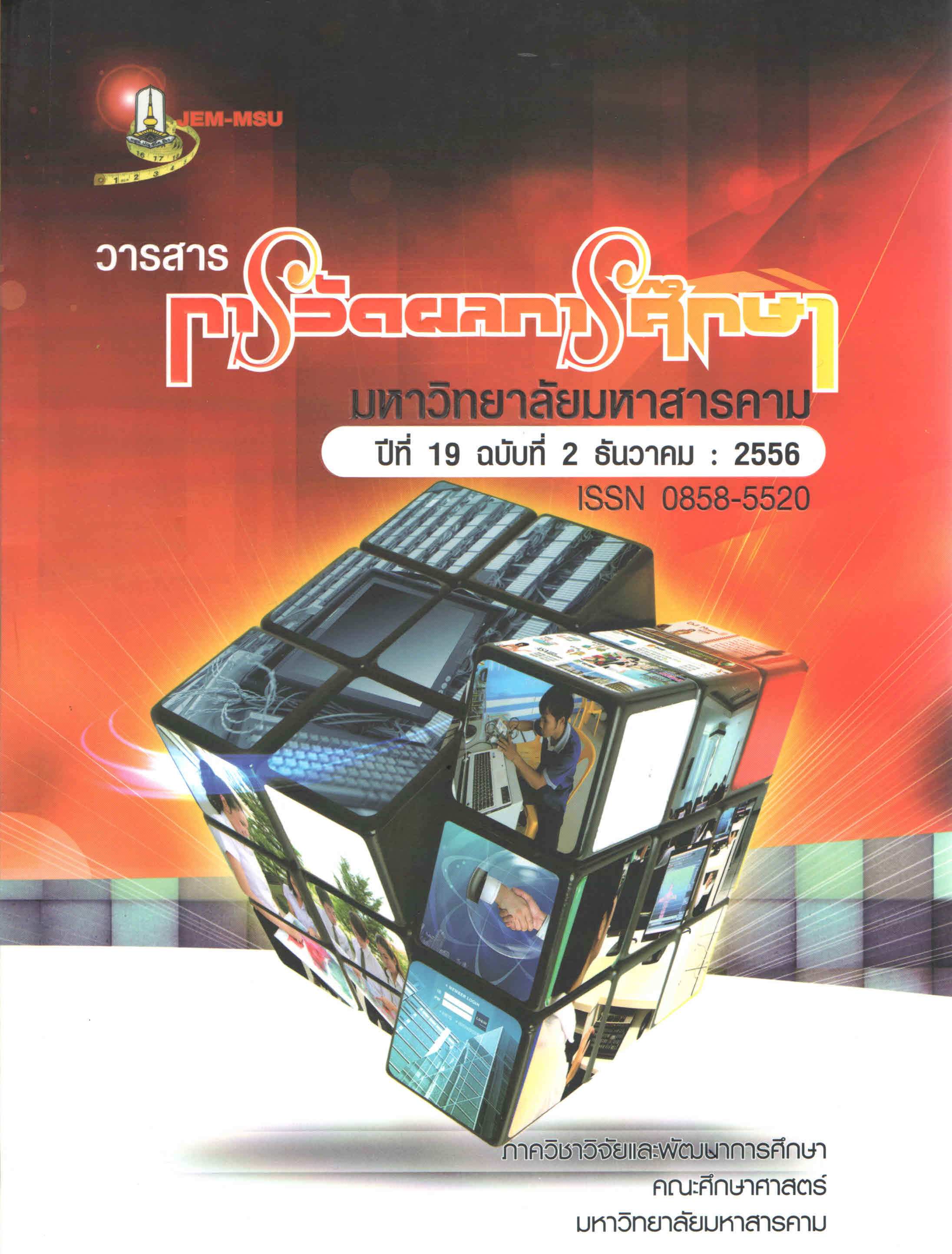Factors Influencing Scientific Creative Thinking of the Matthayomsueksa 3 students at Srisaket Province : a multiple group analysis
Main Article Content
Abstract
Scientific creative thinking is ability to think to obtain new and strange things by relying
on the science process showing original thinking, flexible thinking and fluent thinking. This study
aimed to 1) examine the causal factors that affect scientific creative thinking of the ninth grade
students; at Srisaket Province.2) test the invariance of the the factor model influencing the
scientific creative thinking. The sample use in this study consisted of 1,017 the ninth grade
students in Sisaket province, obtained using the multi-stage random sampling technique. The
instruments used in the study were ;1) a 3- item Subjective test on scientific creative thinking, that
had item difficulty ( PE ) from 0.63 to0.65 the discriminating ( D ) power from 0.48 to0.74 and the
reliabilities 0.907 2) a 30-item test on attitude toward science, a 30-item test on achievement
motive, a 30-item test on self–concept, and a 30-item questionnaire on classroom environment,
with discriminating powers ranged (Item Total Correlation : rxy ) from0.42 to 0.57,0.36 to 0.68,
and0.42 to 0.66, respectively and reliabilities (Cronbach’s Alpha : ) of 0 .964, 0.962, 0.940
respectively. 3) a 30-item questionnaire on classroom environment, with discriminating powers
ranged (Item Total Correlation : rxy ) from0.41 to 0.64 and reliabilities (Cronbach’s Alpha : ) of
0.907Data analyses employed descriptive statistics, Confirmatory Factor Analysis (CFA), Structural
Equation Model (SEM),Multiple Group Analysis used instant Mplus 6.12 computer programs.
The results of the study were as follows :
1. The development and goodness of fit test result of the factor model influencing
the scientific creative thinking of the ninth grade students in Sisaket province revealed that the
model was consistent with the empirical data at a good level test by the index statistic test of
the consistency 2 = 121.269, df = 110, 2 / df = 1.102, p-value =0.2177, CFI = 0.999, TLI = 0.999,
RMSEA = 0.010, and SRMR = 0.030,All variance of model were positive significantly at .01 level. The
variance with the highest direct influence on the scientific creative thinking (CRA) was latent
variance of achievement motive (MOT), latent variance of attitude toward science (ATT) and latent
variance of self–concept (SEL) respectively. The variance with the highest indirect influence on the
scientific creative thinking (CRA) was latent variance of classroom environment (ATM). It was
revealed that the model co-factor explained the variance of the scientific creative thinking factors
at 41.70 percent
2. The results of the multiple group analysis factors model that influence on the
scientific creative thinking of the ninth grade students in Sisaket province, the invariance test
result of the model and parameters in model revealed the model variance in male
students group and female students group with the index of the consistency 2 = 72.630, df = 42,
2
/ df = 1.729, p-value =0.0023, CFI = 0.997, TLI = 0.983, RMSEA = 0.038, และ SRMR = 0.033; was not
invariance of model form in each group, but there was the parameter variance of achievement
motive variable(MOT), self –concept variable (SEL) and classroom environment variable (ATM) on
the scientific creative thinking (CRA), That was, the influence of the attitude of scientific (ATT) and
self –concept (SEL) were important for male students than female students about one time,
While the influence of achievement motivation (MOT) were important for female students than
male students, about four times.
Article Details
The content and information contained in the published article in the Journal of Educational Measurement Mahasarakham University represent the opinions and responsibilities of the authors directly. The editorial board of the journal is not necessarily in agreement with or responsible for any of the content.
The articles, data, content, images, etc. that have been published in the Journal of Educational Measurement Mahasarakham University are copyrighted by the journal. If any individual or organization wishes to reproduce or perform any actions involving the entirety or any part of the content, they must obtain written permission from the Journal of Educational Measurement Mahasarakham University.


